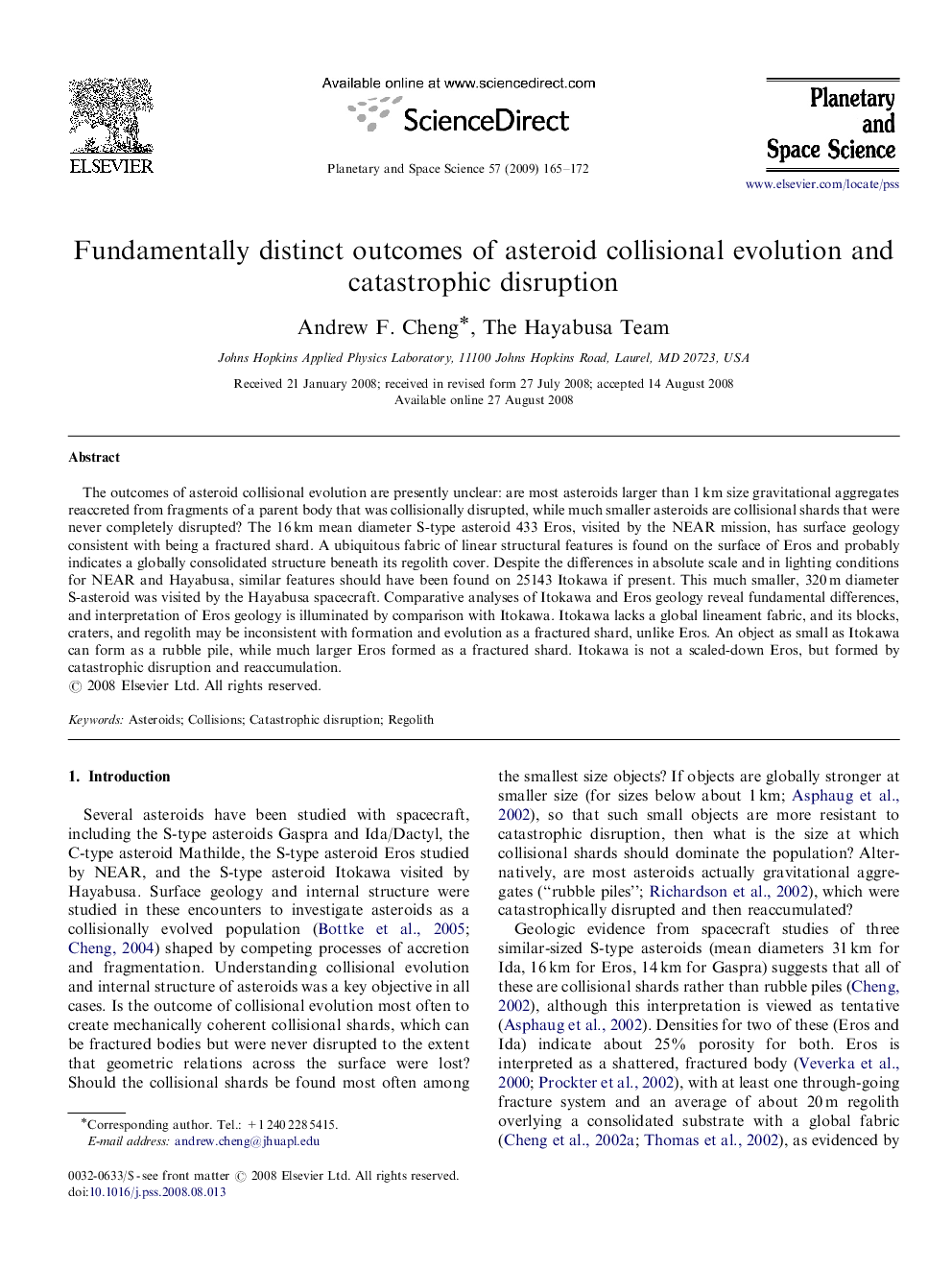| Article ID | Journal | Published Year | Pages | File Type |
|---|---|---|---|---|
| 1782416 | Planetary and Space Science | 2009 | 8 Pages |
The outcomes of asteroid collisional evolution are presently unclear: are most asteroids larger than 1 km size gravitational aggregates reaccreted from fragments of a parent body that was collisionally disrupted, while much smaller asteroids are collisional shards that were never completely disrupted? The 16 km mean diameter S-type asteroid 433 Eros, visited by the NEAR mission, has surface geology consistent with being a fractured shard. A ubiquitous fabric of linear structural features is found on the surface of Eros and probably indicates a globally consolidated structure beneath its regolith cover. Despite the differences in absolute scale and in lighting conditions for NEAR and Hayabusa, similar features should have been found on 25143 Itokawa if present. This much smaller, 320 m diameter S-asteroid was visited by the Hayabusa spacecraft. Comparative analyses of Itokawa and Eros geology reveal fundamental differences, and interpretation of Eros geology is illuminated by comparison with Itokawa. Itokawa lacks a global lineament fabric, and its blocks, craters, and regolith may be inconsistent with formation and evolution as a fractured shard, unlike Eros. An object as small as Itokawa can form as a rubble pile, while much larger Eros formed as a fractured shard. Itokawa is not a scaled-down Eros, but formed by catastrophic disruption and reaccumulation.
